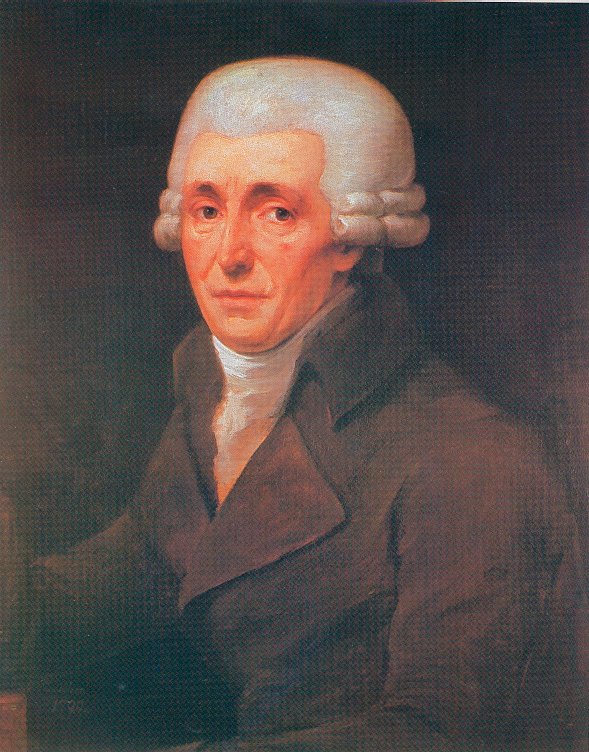

Austrian composer. He was one of six children born to Mathias Haydn (a wheelwright and civil servant) and Anna Maria Koller in Lower Austria. His parents, wanting to prepare him for the priesthood, sent him in 1738 to a church school in nearby Haitiburg. There Haydn took his first formal instruction in music. When Georg Reutter, the newly installed music director at St. Stephen's Cathedral, Vienna, came recruiting, the young Haydn was recommended for the choir. Upon reaching the choir's minimum age of eight, Haydn was invited to Vienna.
At St. Stephen's Haydn received instruction in voice, violin, and keyboard, but little general education except for a smattering of Latin. In 1745 he was joined there by his brother Michael, and almost immediately the gifted younger sibling assumed the elder's position as soloist. Passing out of the limelight probably encouraged Haydn in his natural bent for composition, but he received little help: Reutter, himself a professional composer, gave the youngster only two lessons. As Haydn's voice changed, his position as a chorister became increasingly untenable. In late 1749 he was dismissed peremptorily over a practical joke.
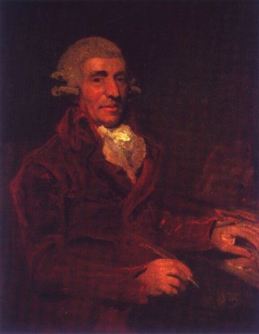
Taking an attic room next door to St. Michael's Church, he made ends meet by giving violin and keyboard lessons, working as a free-lance musician in churches, and performing in (and sometimes composing for) groups playing the open-air evening serenades so popular in Vienna. At the same time he began an intensive study of counterpoint (using the writings of Fux) and figured bass (using Mattheson). The results of his industry were clearly evident by 1751, when Pietro Metastasio, the renowned poet and architect of opera seria, engaged Haydn to tutor a gifted girl, Marianna Martines. Haydn's earliest extant composition, perhaps the first that he did not discard as apprentice work, was a Missa brevis, written by 1753. That same year Martines began vocal studies with Nicola Porpora; through her and Metastasio, Haydn gained an entree to that famous opera composer.
Haydn proposed to serve as Porpora's factotum in return for instruction; although this arrangement was undertaken for no more than three months, Haydn later credited Porpora with teaching him "the true fundamentals of composition;" he also learned much about setting Italian texts. Haydn's interest in writing for the theater received a further boost at this time. One of his open-air serenades was heard by the manager of the Kärtnerthortheater; the result was a collaboration mounted there in 1753--and again, with some revisions, in 1758--Der krumme Teufel; neither version survives. Two scores dated 1756 do survive, an organ concerto and a Salve Regina, the first and possibly the second written for the ceremony during which Haydn's first great love, Therese Keller, took the vows of a nun.
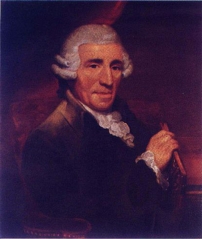
During this period keyboard pieces by Haydn began circulating in Vienna. Countess Philippine Aloysia Thun liked one of them so much that she sought out Haydn to teach her keyboard technique and singing. To have such a student certainly added luster to Haydn's name, but it was probably the attractiveness and originality of his music that ultimately gained him his first patron, Freiherr Karl Joseph von Fürnberg, an amateur violinist at whose country house in Weinzierl musicians gathered. There Haydn produced his first string quartets to great acclaim. In 1759 Fürnberg recommended Haydn to Count Karl von Morzin, whereupon the count made the composer his music director; as such Haydn spent at least one summer at the count's estate at Lukavec, Bohemia. For Fürnberg and Morzin, and probably for concerts in Vienna, Haydn began the imposing series of symphonies and string quartets for which he is best known. A collection of manuscripts once owned by the Fürnbergs (currently housed at the Helikon Library in Keszthély) shows that from the start Haydn saw these genres as ones in which to explore and experiment.
In November 1760 Haydn, now confident of modest financial security, married Therese Keller's elder sister, Maria Anna. He had hardly done so when Count Morzin, early in 1761, decided to disband his costly orchestra. Apparent disaster turned into a stroke of luck when Prince Paul Anton Esterházy, himself a sometime composer and one of Europe's most lavish patrons of music, heard that Haydn was available and invited him to become the assistant music director at his lodgings in Vienna and Eisenstadt (which he knew by the Hungarian name Kismarton). Haydn officially reported to work (in Vienna) on May 1, 1761; by that time, however, he had already spent some six weeks recruiting musicians for the prince's band.
Haydn had worked scarcely a year when the prince died on March 18, 1762. If Haydn was once again plunged into uncertainty about his future, his fears would have been dispelled quickly, for Nikolaus, brother and successor to Paul Anton, possessed an appetite for music that was, if anything, even keener than his predecessor's. Haydn's original contract stipulated that he report to the prince in the morning and again in the afternoon to see if music making was wanted. This arrangement probably continued with Nikolaus, whose evenings were given over to theater and music theater. Daily music making often meant accompanying the prince in divertimentos for his favored instrument, the baryton, typically in concert with viola and cello (Haydn created a repertory of at least 126 such works in the years 1765-76); it sometimes meant playing solo keyboard works. Twice a week, orchestral "academies" were held; for these Haydn could probably count on assembling, before 1776, two oboes, two horns, one bassoon, and nine strings (disposed 3-3-1-1-1), with himself the leader; trumpets and drums were added on festive occasions. There is no evidence that Haydn (or anyone else) played continuo in instrumental music.
In 1766 Prince Nikolaus moved his entourage into a palace, Esterháza, that he was building in Hungary. About the same time, or perhaps slightly earlier, Haydn first encountered keyboard music by Carl Philipp Emanuel Bach. In later years Haydn saw these two events as having been decisive for his development: isolation at Esterháza forced him to be original; the keyboard music of Emanuel Bach inspired him to forge a musical idiom that went beyond the pleasantries of the galant style. There is probably a grain of truth in both assertions, even though inventories made in 1759 and 1803 show a wealth of contemporary music in the princely library and an emphatically intemational. bias to the collection, and even though Haydn by the mid-1760s was already too assured and original a composer to imitate Bach's music directly. Haydn's remarkable musical development both before and after 1766 can be seen, above all, in the symphonies and keyboard sonatas. In his chamber music, written for the daily pleasure of his prince, one finds a more conventional idiom that remains anchored in the aesthetic framework of the divertimento. But beginning with his opus 9 string quartets of 1769, Haydn began writing some of his most challenging and original music for chamber groups as well.
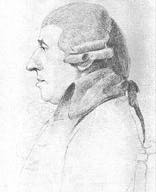
For Prince Nikolaus, more music lover than musician, Haydn's increasingly complex musical style seems to have brought challenges that were not always welcome. Haydn's letters reveal that the prince did not hesitate to recommend (i.e., command) specific musical revisions in the baryton works; but Nikolaus did not stop there: a surviving autograph for Symphony no. 42 (1771) shows the prince censoring a musically audacious passage.
During his years at Eisenstadt and Esterháza, Haydn did not neglect dramatic music. By the time of the move to Esterháza he had written for Prince Nikolaus five one-act operas and a two-act intermezzo. At Esterháza a 400-seat theater and a smaller marionette theater were built. Haydn wrote for both, including, for the opening of the former in 1768, his first full-length opera, Lo speziale. During the same period he also composed a series of liturgical works for the prince's chapel. That Haydn set great store by his vocal music was only natural: vocal genres had always carried more prestige than instrumental ones. It was not until Haydn's later years, when the impact of his own music (together with the best of his contemporaries') had been absorbed by the musical public, that larger instrumental forms began to assume the same prestige as vocal music.
In an autobiographical sketch of 1776, Haydn emphasized his connection with Porpora and named a Stabat Mater (1767), an oratorio, Il ritorno di Tobia, and three of his recent operas as his most important works to date. Haydn's contemporaries recognized his flair for theatrical music. In 1775 Viennese critics received Haydn's oratorio warmly, being particularly impressed by the power of his choral writing, which they likened to Handel's. The following year he was commissioned to write an opera for the imperial court. Prince Nikolaus, who had always hired professionals from Vienna to run his opera, now turned this responsibility over to Haydn. In 1779 Haydn brought his opera buffa La vera costanza to Vienna. But instead of being produced, his opera-like that of many another composer-was sunk by backstage intrigues. This unhappy experience probably had some bearing on Haydn's subsequent reluctance to write an opera for theaters (as in Prague) where he was not well connected.
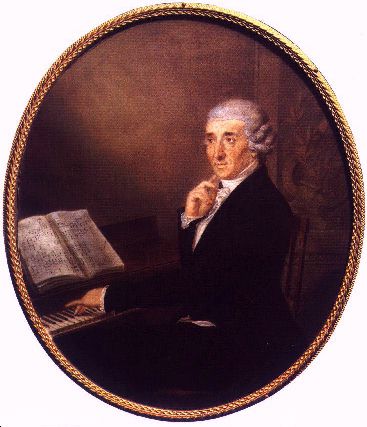
In his contract of 1761 it was stipulated that Haydn "neither communicate [his] compositions to any other person, nor allow them to be copied ... and not compose for any other person without the knowledge and permission of His Highness." This injunction did little to slow the dissemination of Haydn's works abroad. Between 1764 and 1780, 51 authentic chamber works and 43 authentic symphonies had their first publications in unauthorized editions in Paris, Amsterdam, and London. These 94 works are but the tip of an iceberg that includes pirated republications, a large number of circulating manuscript copies, and many spurious works. The extent of Haydn's complicity in this dissemination is not known, but he cannot have been pleased to go without recompense for his labors. From this flagrant piracy two results ensued. First, in 1779 Haydn obtained from Prince Nikolaus the freedom to write for and publish with whomever he pleased. Second, by the early 1780s Haydn had become one of the best-known and most sought after composers in Europe. For Lisbon he revised his oratorio; for Cadiz he wrote Die sieben letzten Wörte unseres Erlüosers am Kreuze; for the King of Naples he penned several concertos; for Paris he revised La vera costanza (as Laurette) and composed six symphonies.
Attempts to get Haydn to England began with the Earl of Abingdon's invitation in 1782; throughout the decade the popular papers kept a running account of these efforts. During the 1780s Haydn composed operas, symphonies, and quartets that further expanded the horizons of those genres. When in Vienna he met and kept in touch with Mozart, whose music impressed him profoundly. In September 1790 Prince Nikolaus died. His son and successor, Anton, immediately disbanded the orchestra and opera at Esterháza. Haydn was given a stipend and permission to leave. He had scarcely done so when the English entrepreneur Johann Peter Salomon convinced him to visit London. On his way to London in December 1790 he stopped at Bonn, where Beethoven may have met him. Either then or when Haydn passed through Bonn on his return in 1792, he was shown one of Beethoven's cantatas; Haydn was sufficiently impressed to accept the young man as a student. In England Haydn wrote his last opera and his best-known symphonies, trios, and sonatas. All his London concerts were well received, but the public seems to have especially liked the symphony Hob. I:94 with its unexpected timpani outburst in the slow movement; the work was soon heard again at a benefit concert, christened "the Surprise" by the organizer of that occasion.
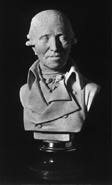
Haydn returned to Vienna in July 1792 only to set out for England again in January 1794. The second visit was, if possible, even more successful than the first, and King George III asked Haydn to move to London permanently. This Haydn felt unable to do, and he returned to Austria in August 1795. In the meantime Prince Anton had died. A new Prince Nikolaus pressed Haydn back into limited service to provide an annual Mass for the Esterházy chapel. As it happened, Haydn's own thoughts had centered on choral music ever since he had attended the Handel commemoration at Westminster Abbey. In the last eight years of his creative life Haydn produced an unbroken series of masterpieces that constitute his most public and his most private utterances: on the one hand, two large-scale oratorios and six Masses in which Austrian choral tradition is fused with the classical symphony; on the other the eight and one-half quartets of opp. 76, 77, and 103.
After 1803 he found it impossible to compose. But by then he had become an institution of sorts. Five medals were struck in his honor. Breitkopf & Härtel issued a putative Oeuvres complètes in 12 volumes (1801-6), an honor previously reserved for the dead; Pleyel published a Collection complette des quatuors (1801).